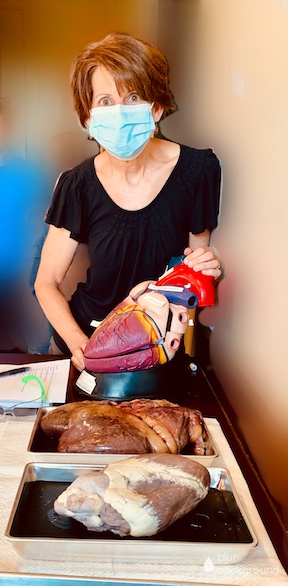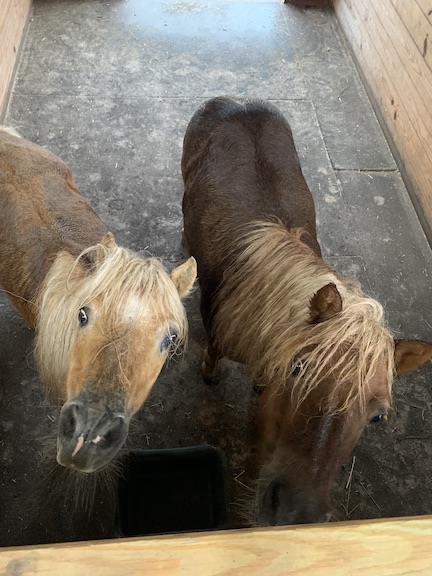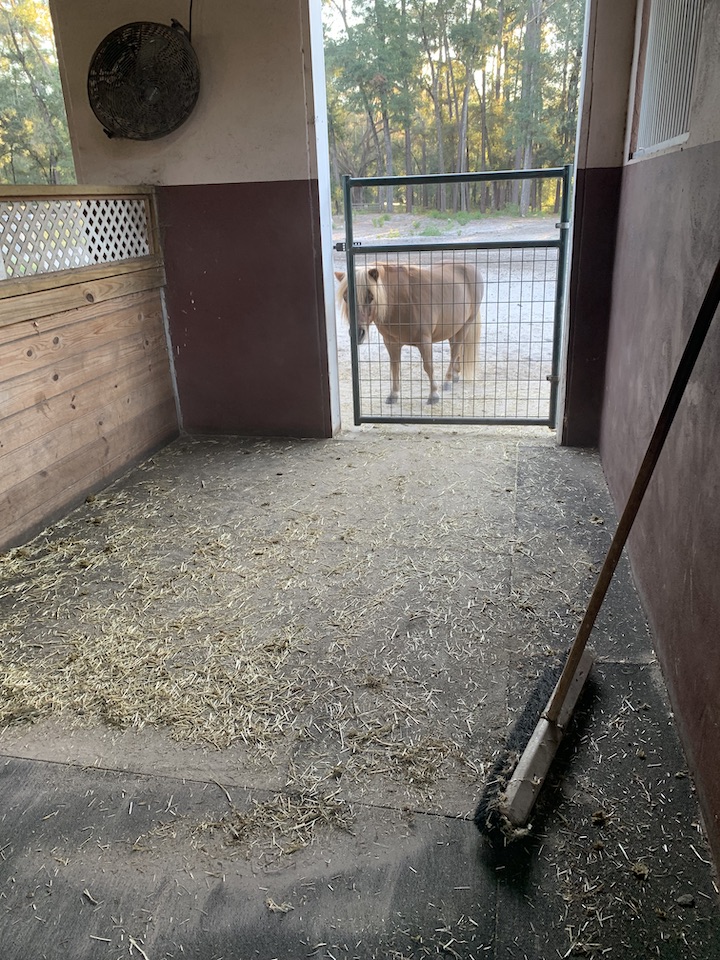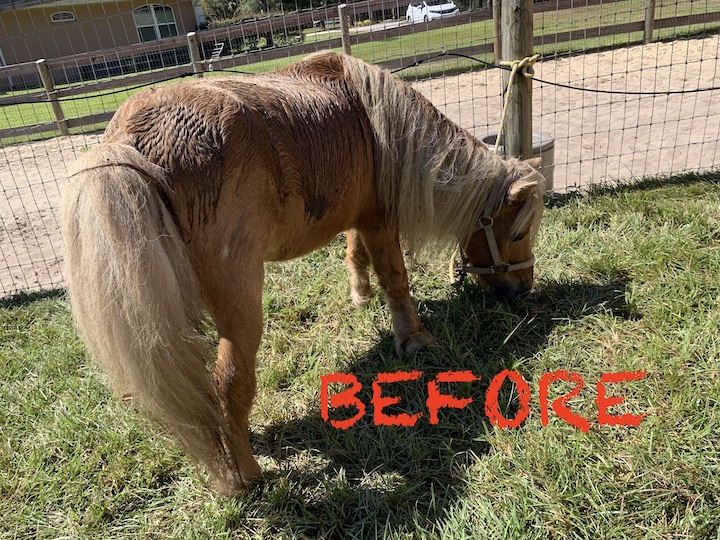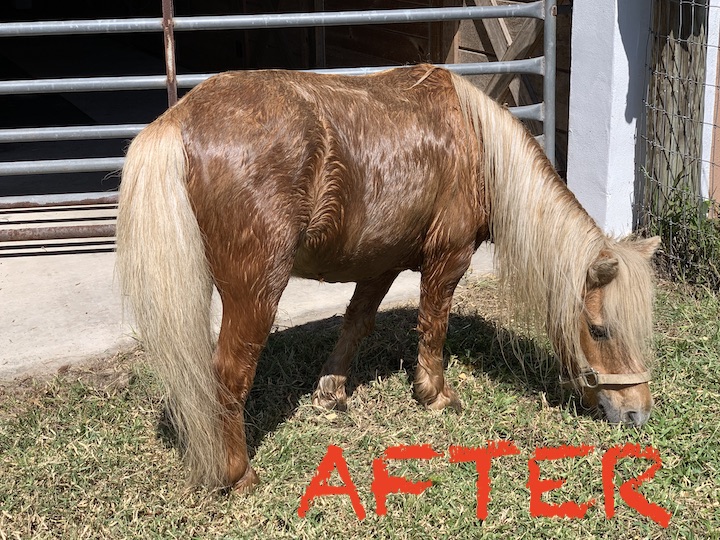Since heading back to college last fall, I knew I would be required to complete an internship. The thought made me anxious. As a veteran teacher, I’m used to being one of the experts in my field, but in the horse world, I’m a rookie. I worried about feeling stupid. I worried about making embarrassing mistakes. I worried about having condescending supervisors. After my first week on the “job,” I am breathing a sigh of relief … no, it’s more than that. I am actually giddy with joy to have this opportunity.
My neighbor introduced me to Sharon Madere, a certified horse behavior consultant, who agreed to take me on as an intern at her gorgeous 39-acre farm. Her business, EquiLightenment, offers equine behavior consulting and positive reinforcement training. In addition, she operates a small breeding program, Silver Moon Iberians.
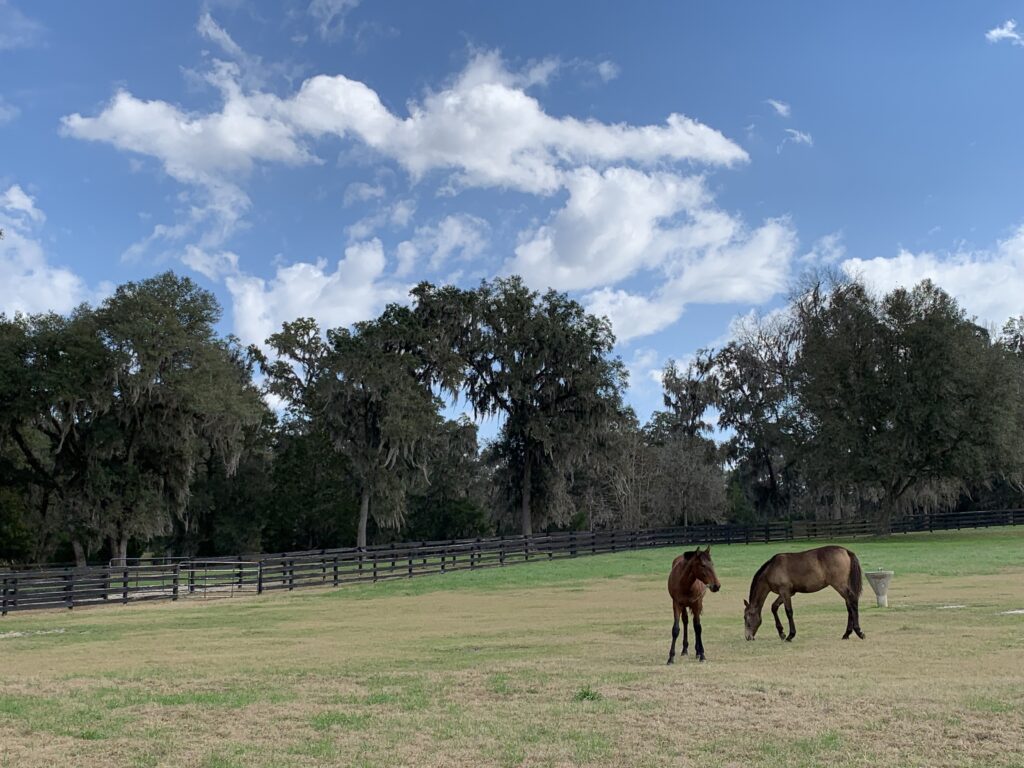
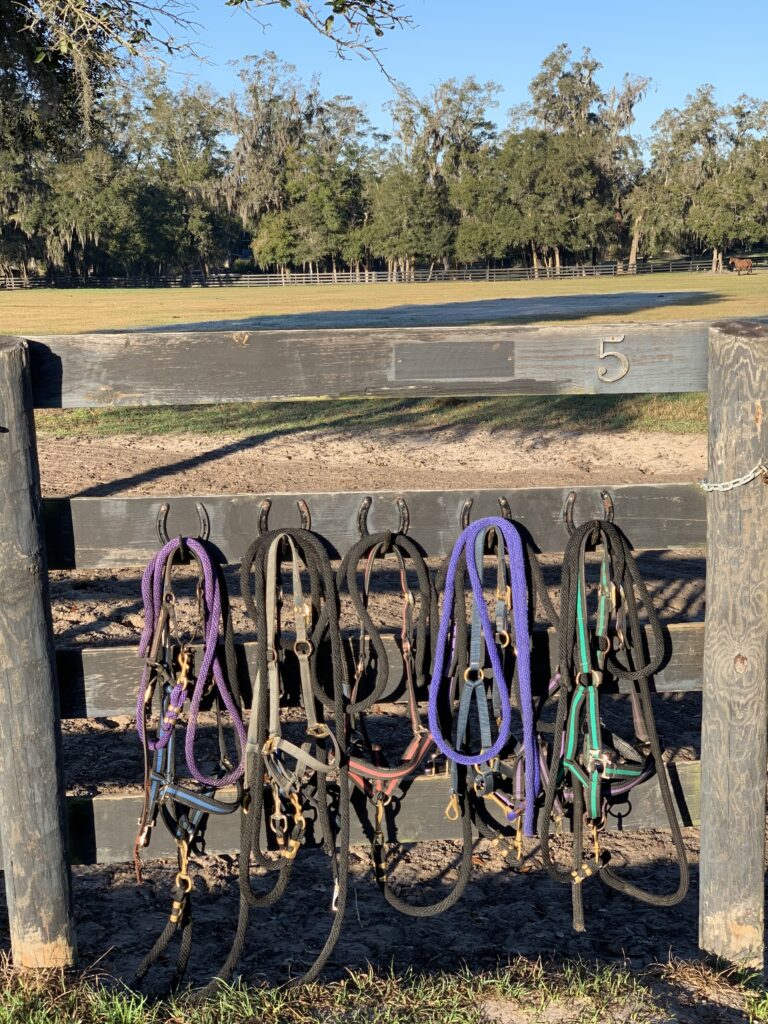
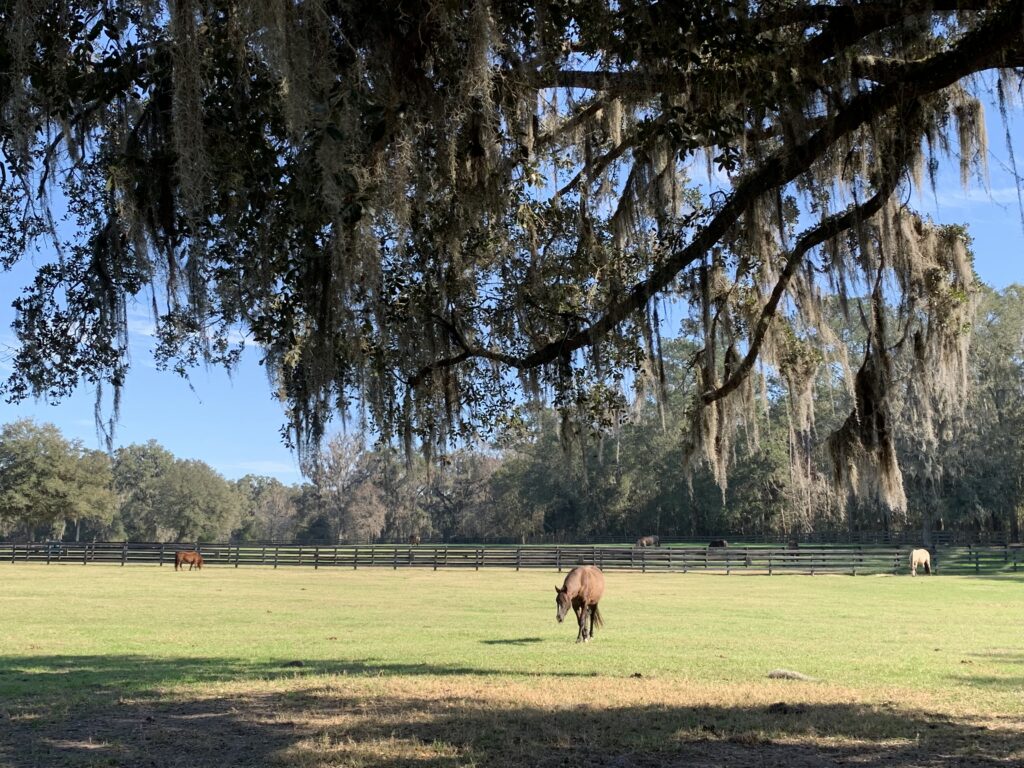
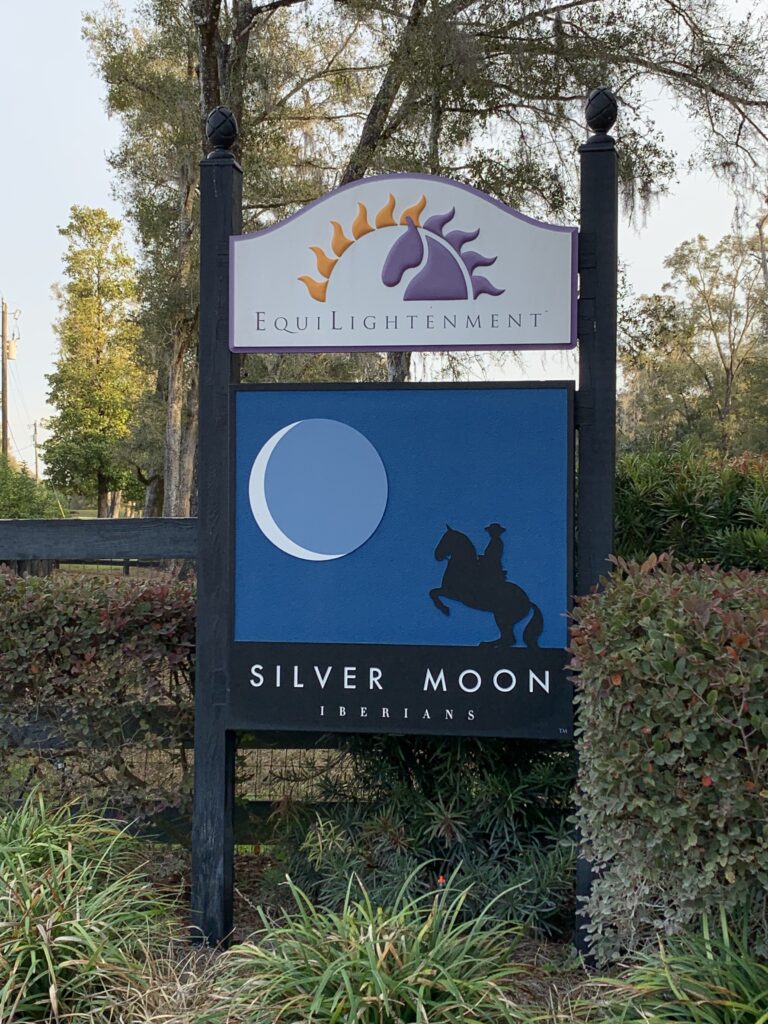
The farm has a wonderful vibe that seems to stem from a genuine love and respect for horses paired with an idyllic setting. Towering oak trees draped with moss provide a dramatic backdrop to the pastures, and the barn is bright and breezy, clearly designed with the horses’ welfare in mind.
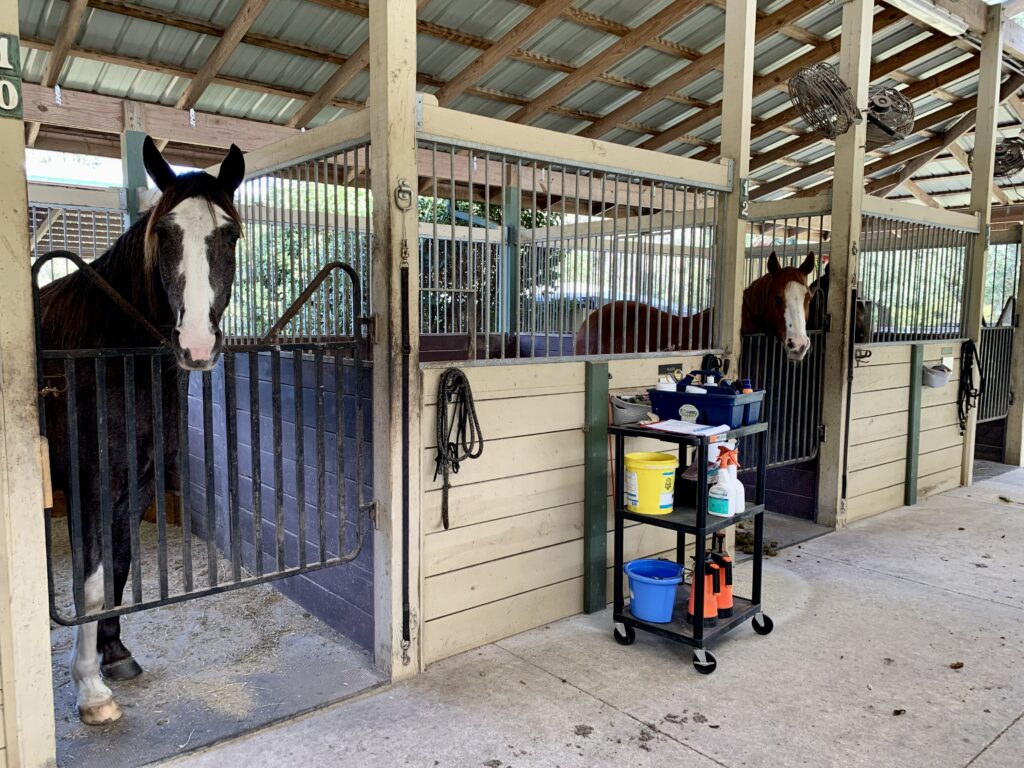
Sharon was out of town last week, but her barn manager and fellow trainer, Jess Ward, provided a warm welcome. She has patiently showed me the ropes regarding their barn management practices, and I’ve already learned so much from her.
On my first day, Jess introduced me to Meg Eades, who was visiting to perform body work on some of the horses. According to Meg’s website, she offers Lazaris Method Nerve Release, which “gently unwinds chronic tension and nerve impingements, and promotes soundness and healthy nervous system function.” Watching Meg and Jess work together on a horse named Epic was riveting. Slowly and gently, they helped Epic release tightness in his neck through body work and movement.
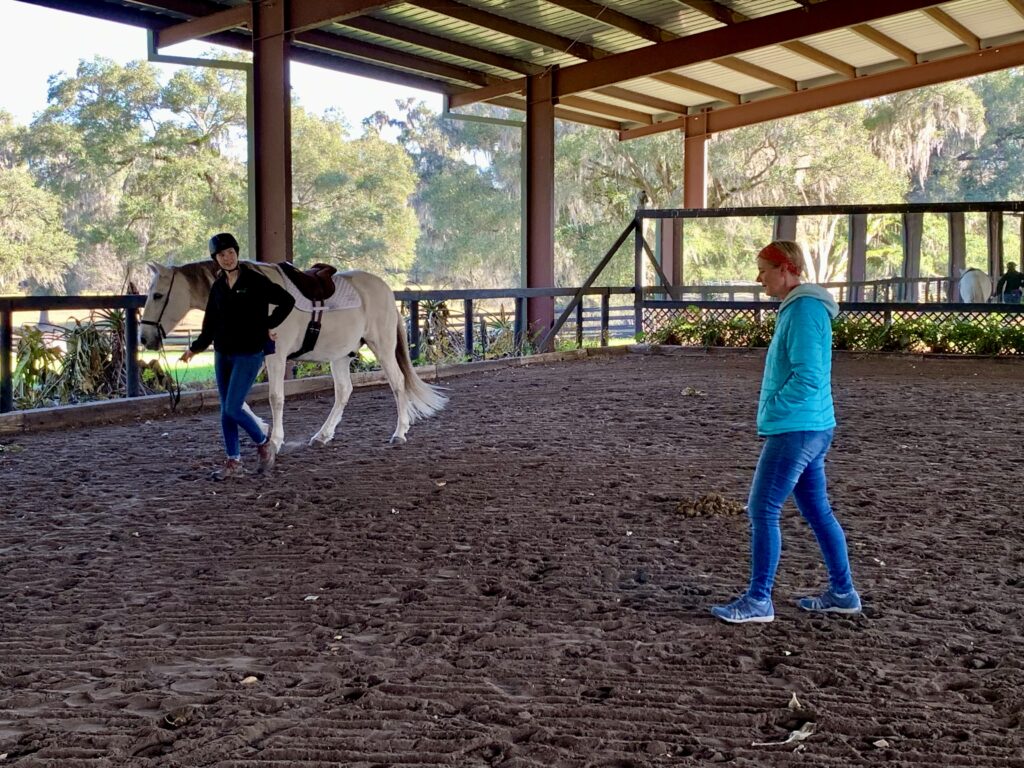
Meg also worked with the resident stallion, Ladino.
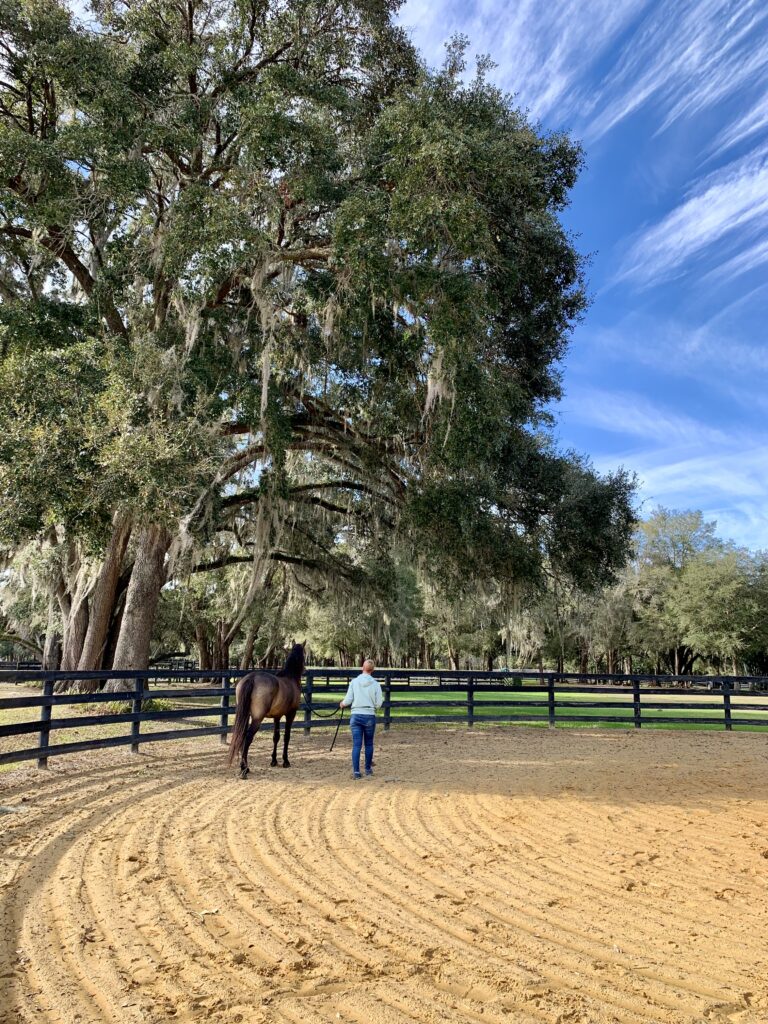
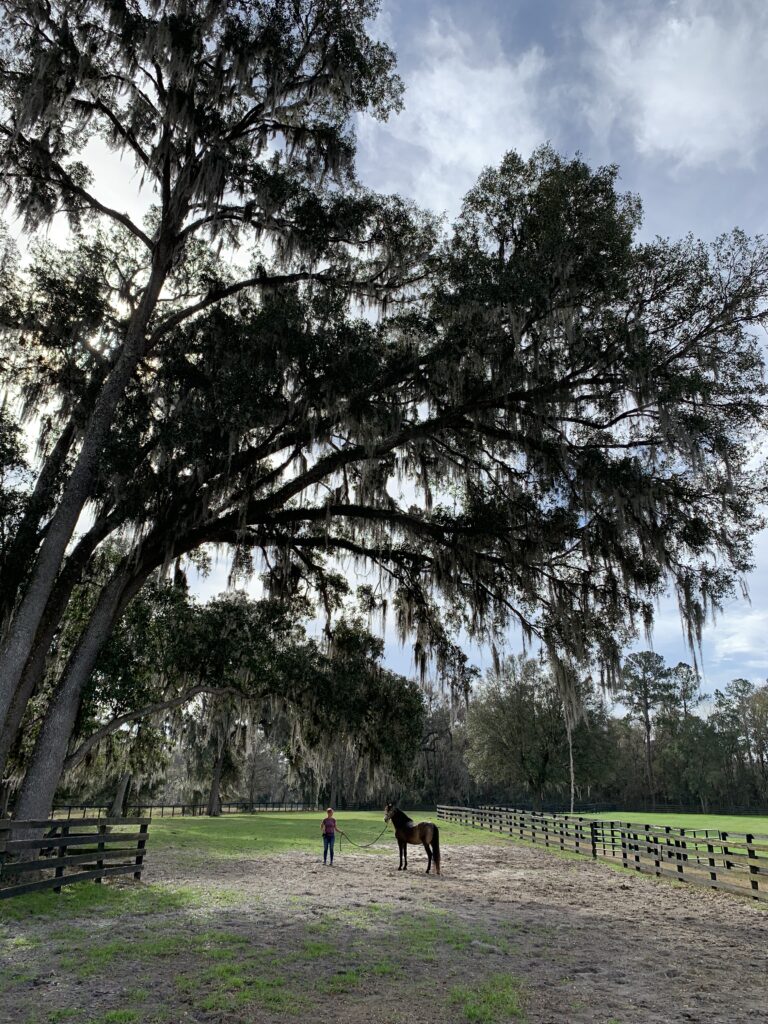
On my second day, I met Dr. Karen Hitchings, who shared her philosophy about barefoot trimming. The goal is to help the horse feel balanced, she said, to move him out of his sympathetic nervous system (fight or flight) and into his parasympathetic nervous system (rest and relax).
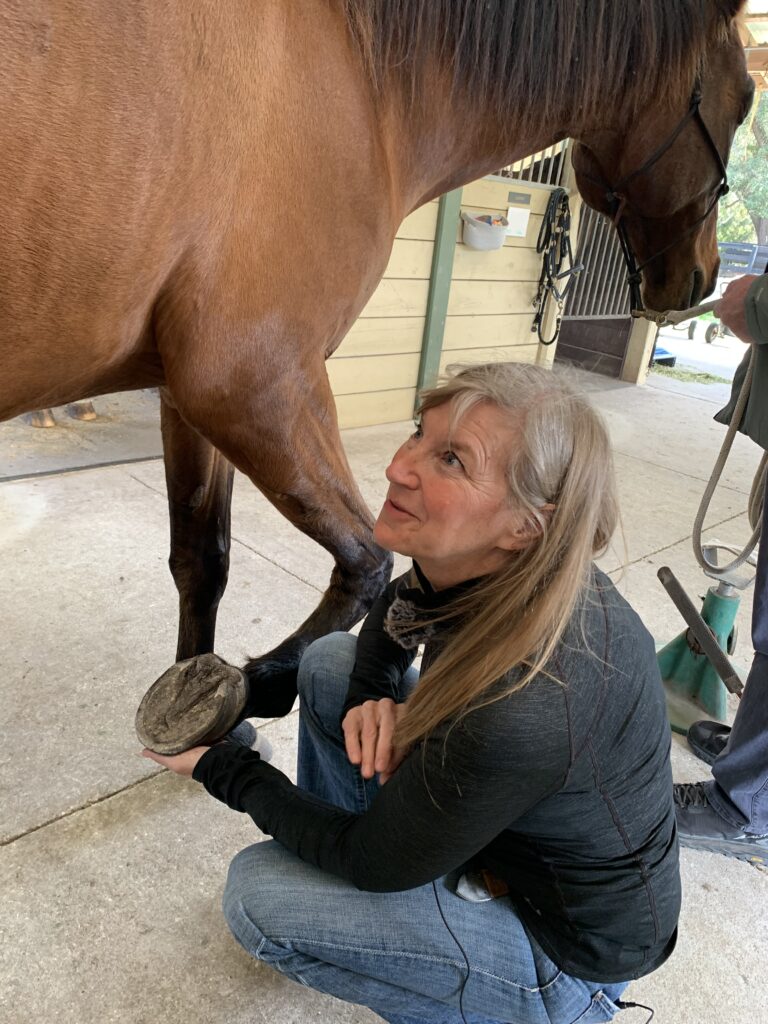
When we weren’t chatting with visitors to the barn, Jess walked me through the daily routines. We brought the horses in from the pasture to feed and groom them. We cleaned stalls and filled hay bags. We hauled hay out to the pastures to ensure horses had 24/7 access to the forage necessary to keep their digestive system in working order. Jess drove the Gator, zig-zagging around the pastures, while I threw handfuls of alfalfa, a management practice that encourages horses to move around as they graze.
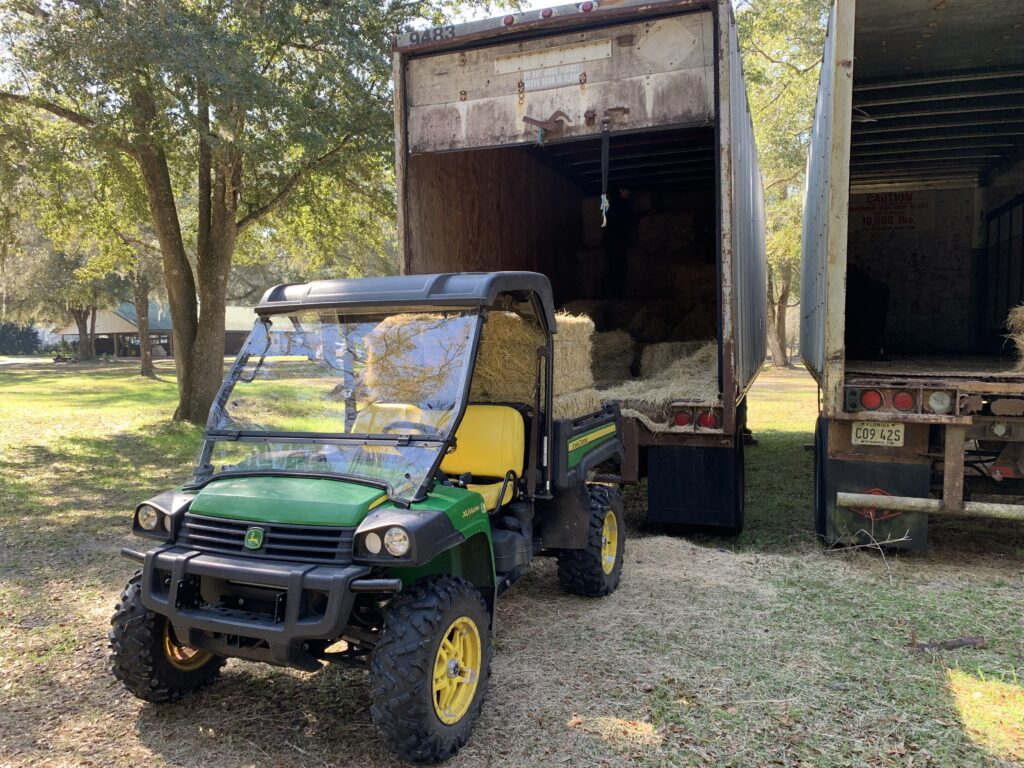
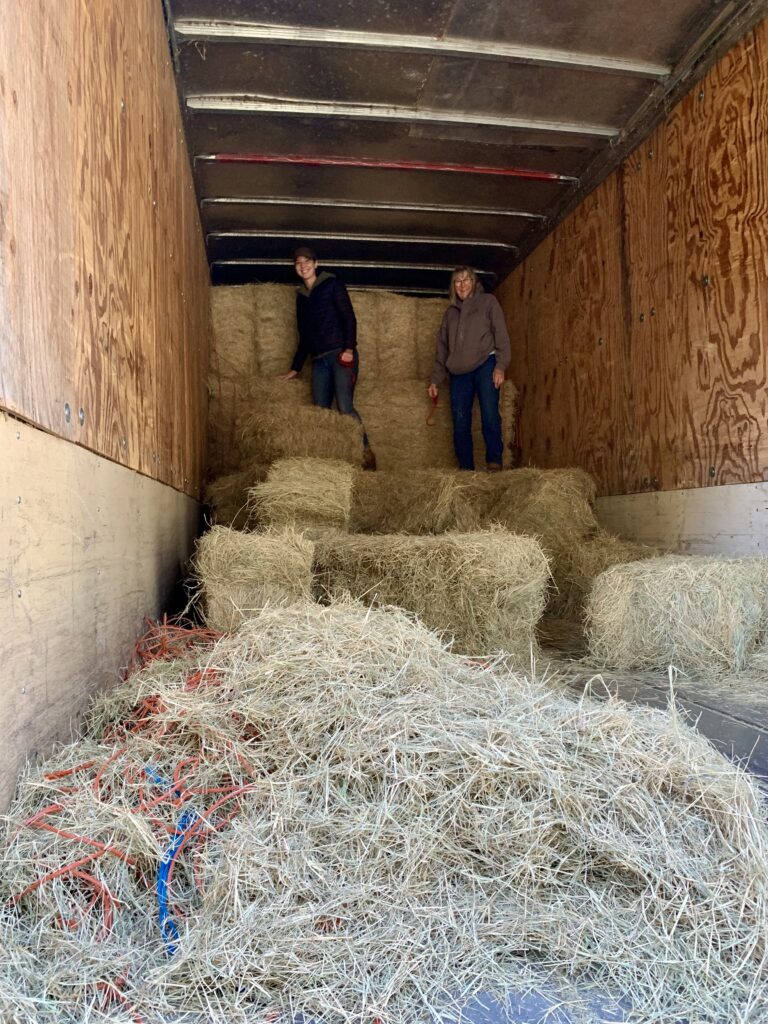
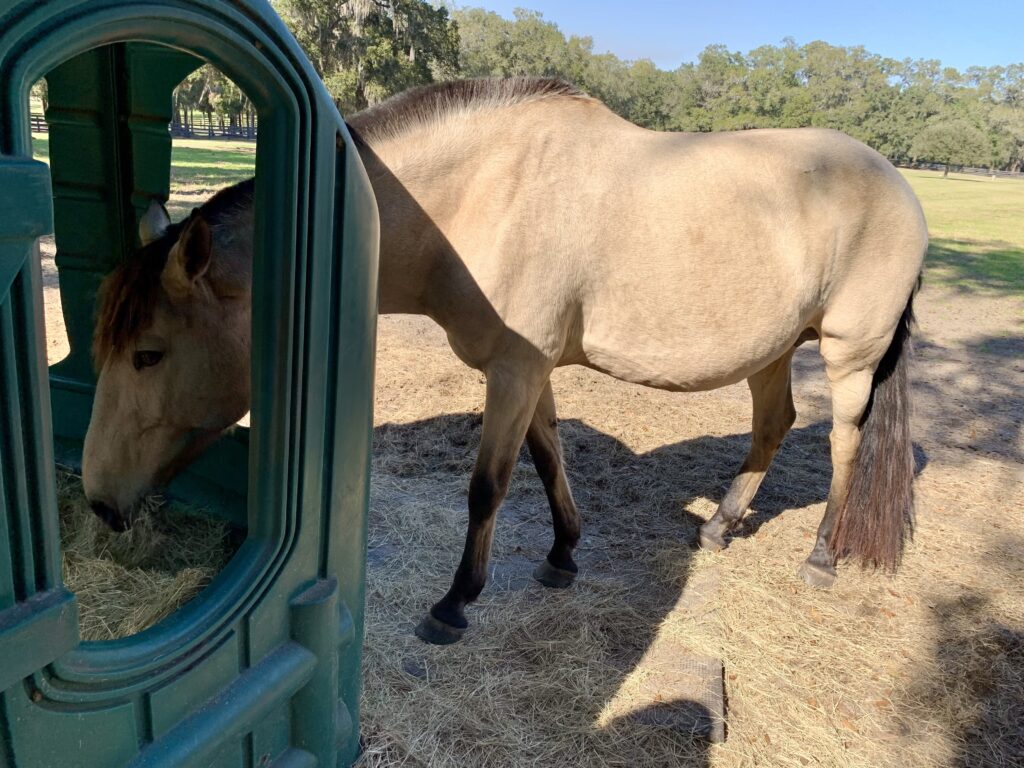
One of the pregnant mares, Crescente, is due to deliver her foal any day now. She is huge and uncomfortable. Not surprising since a newborn foal averages around 100 pounds! Jess explained that testing the pH balance of Crescente’s milk would help predict when she’ll have the baby. Researchers have found that when the pH drops below 6.4, the mare has a 97% chance of foaling in the next three days. I have my fingers crossed that I will be there when it happens.
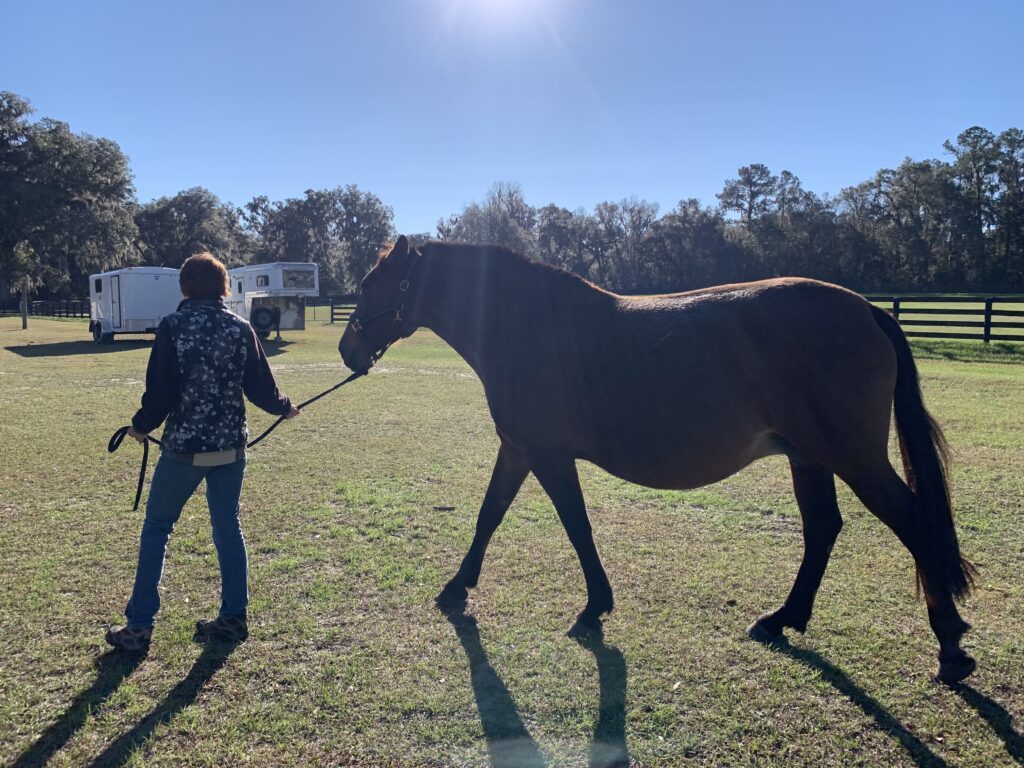
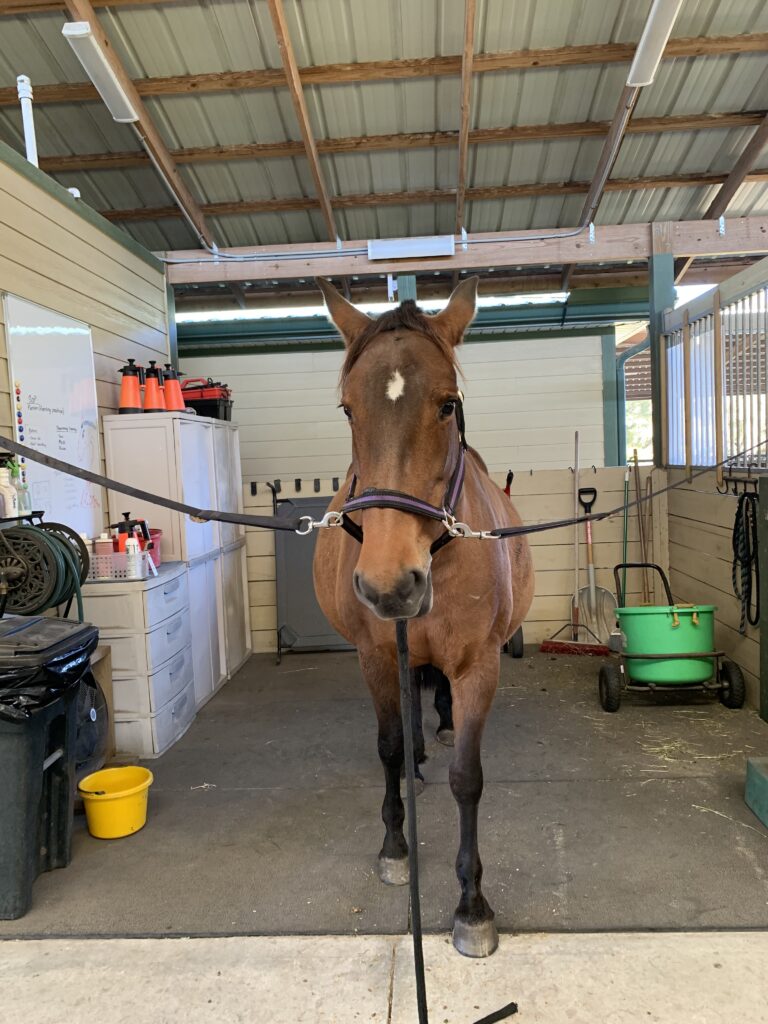
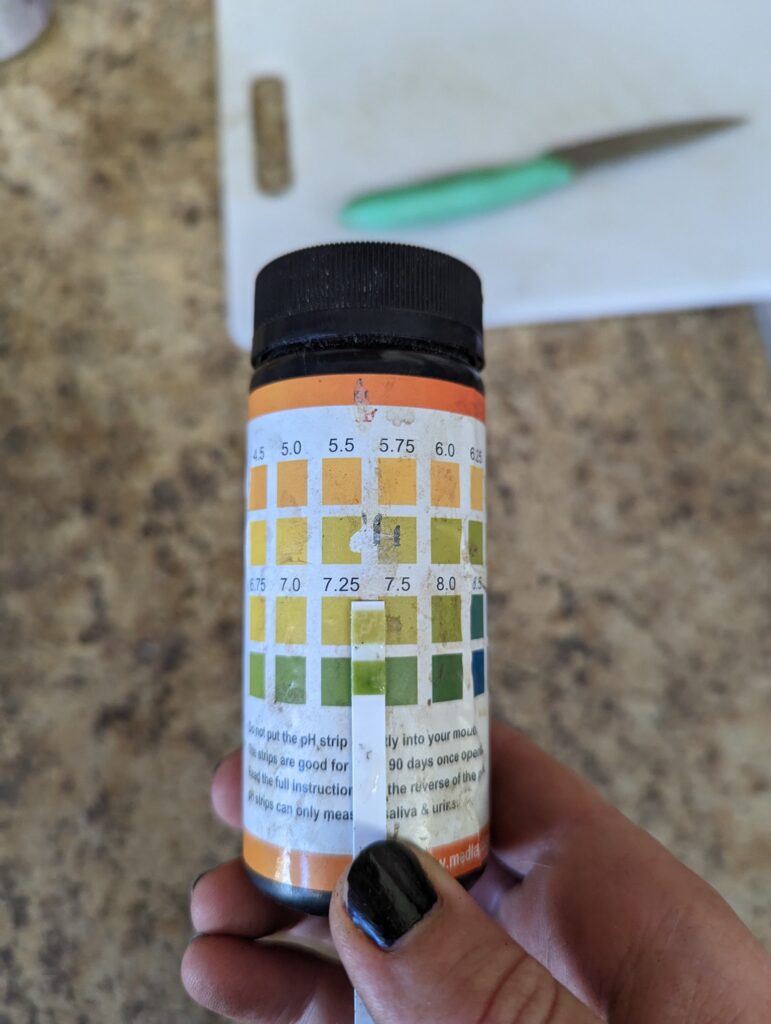
I also watched Jess give a dewormer to one of the colts, Solsticio. She calmly desensitized him to the plastic syringe – showing it to him, letting him smell it, touching his face with it, etc. – so she could administer the oral paste. I followed her lead later than night when I had to give one of the minis some anti-diarrhea medicine.
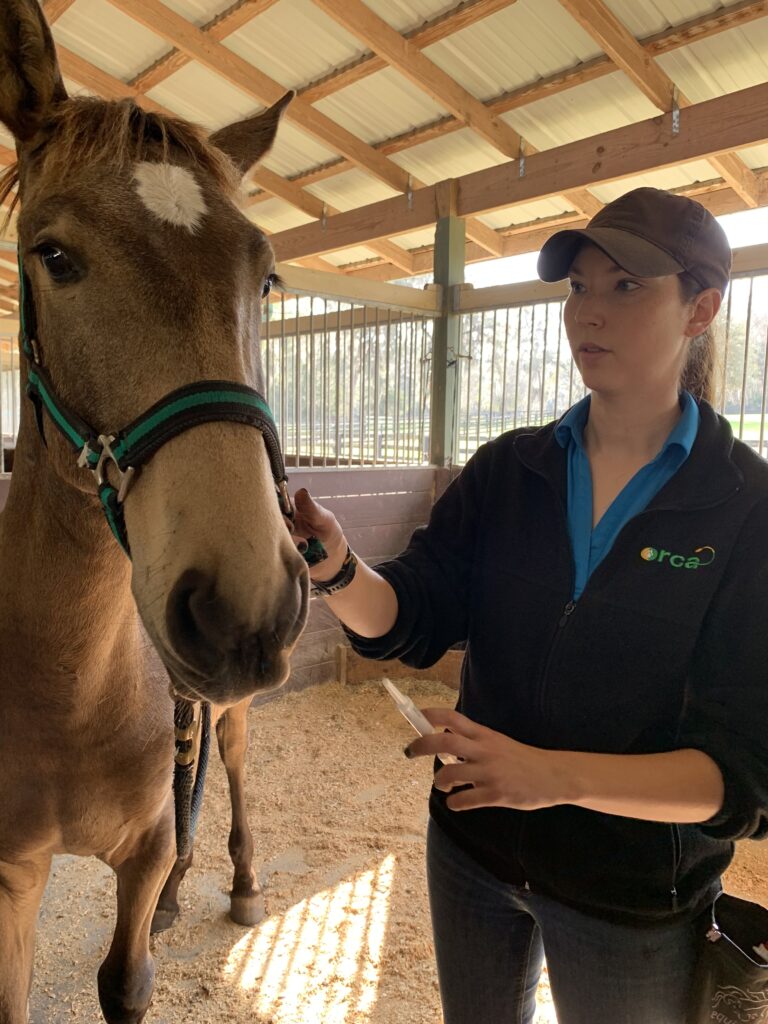
I’ll be working and learning at EquiLightenment three days a week until I complete 120 hours. After all those Equine Studies classes, I’m thrilled to have more hands-on experience with horses and the experts who work with them. It reminds me of when I trained to be a teacher. You learn heaps of information, but none of it really makes sense until you step into a classroom. Lucky me … this time, my classroom is a barn.

